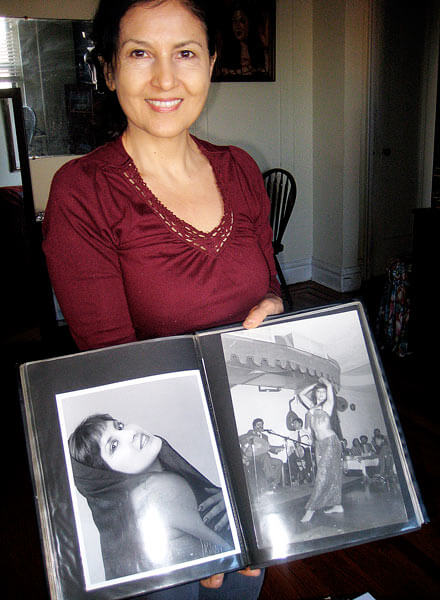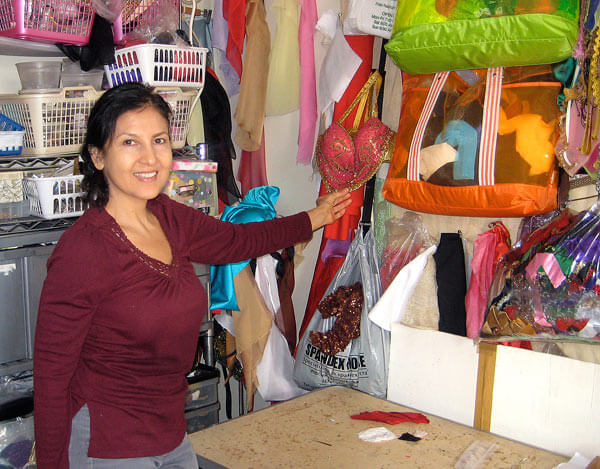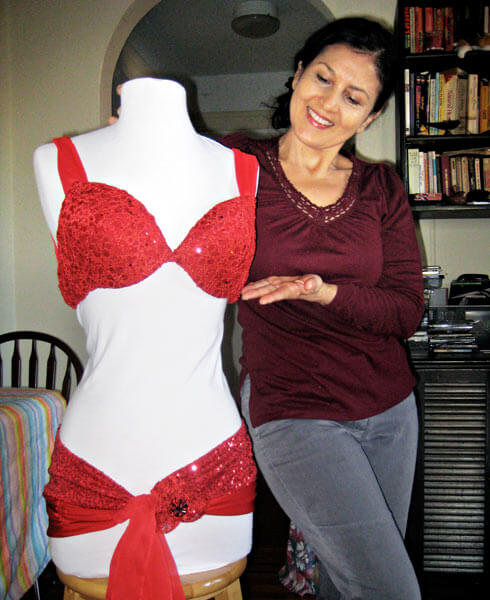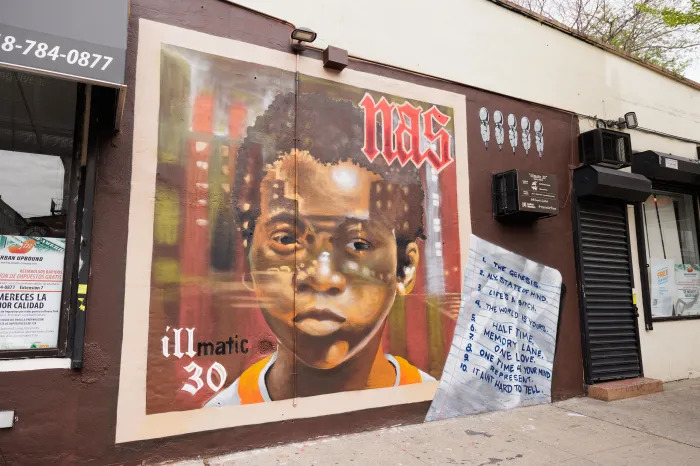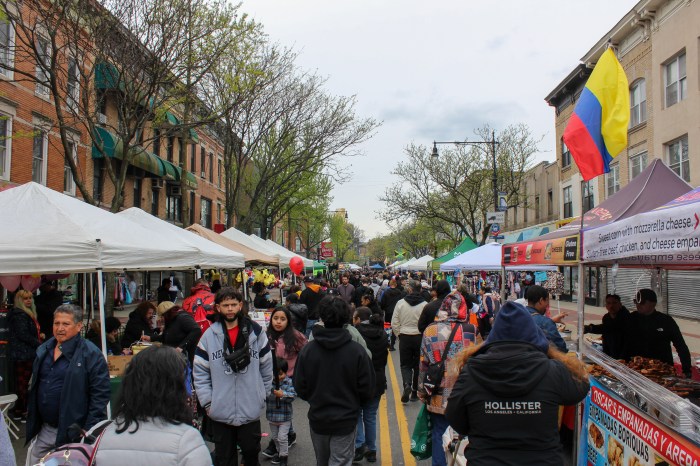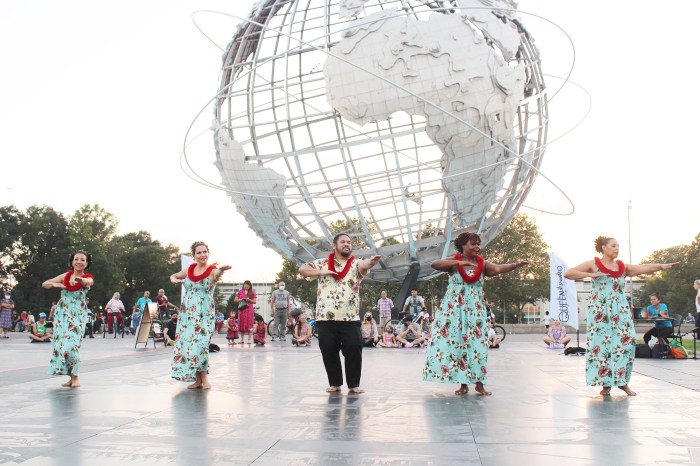By Rebecca Henely
In the subculture of belly dancing, there are few stronger images than the flowing, glittery costumes, but many of these outfits can cost more than $600 and are made in Egypt and Turkey. Astoria dancer Angela Lambru’s first costume cost $800 and she was typically paid $30 for each dance performance.
“So I was basically an indentured servant for a long, long time,” she said.
Lambru, who gives her age as somewhere over 50, now has a business that may make buying a costume a little easier for the next generation of dancers. Working for the last six years out of her apartment on 30th Street, where she lives with five cats, Lambru has created and sold belly dance costumes as well as accessories. She also alters expensive costumes brought from the Middle East.
“Everything is original,” Lambru said of her costume-making. “Everything is my own design.”
Lambru, who is half Greek and half Costa Rican, was born in Central America and moved to the United States when she was 3. It was in New York where she became interested in belly dancing after an ex-boyfriend saw her exercising and suggested she try it. Finding the idea “magical and mystical,” Lambru enrolled at Serena Studios in Manhattan, where she threw herself into it.
“Just the name itself, belly dance. What is that?” Lambru asked. “It sounded to me like something mysterious.”
Lambru calls belly dance the “dance of isolation.” The dance has a large focus on the hips, but is also about having the ability to move one part of the body while keeping the rest of the body composed, as well as layering those movements.
“So it gives that very sinuous, snaky look,” she said.
Under the name Noora-Aphrodite, Lambru performed at Egyptian weddings and bar mitzvahs and also traveled the world throughout the 1980s and ’90s. She said her dark hair and dark eyes gave her a popular look for belly dancing.
“I did cruises,” she said. “I traveled to Paris to London to West Africa, Japan, all over.”
Lambru said she enjoyed the culture of belly dance. She said she got to know people through performing regularly in restaurants. She also enjoyed the music, which in classical belly dance style is usually characterized by Middle Eastern instruments such as the kanoun, which is a flat harp played sideways, or the doumbek, which is a goblet-shaped drum.
“The music is so mesmerizing and exciting and different and it just swallows you up,” she said. “It just takes you in into a whole new world.”
But Lambru said wearing the costumes, which she compared to a little girl dressing up, was also one of the big appeals of belly dance.
“It’s got to look pretty and the most important thing is the bling,” Lambru said.
While she still dances today, much of what she does in the belly dance community is creating costumes. Lambru said she prides herself on making costumes with comfortable fits and for being able to retrofit items into belly dance costumes and accessories. She said she once made a costume out of an old prom dress.
“I always try to make something out of nothing,” she said.
Lambru, who also teaches, said she holds private and semi-private classes in her home as well as workshops at rental studios. While belly dancing continues to evolve, Lambru said she teaches in the classical style in which she was taught. She usually has 15 students at any given time. Lambru said that like any type of dancing, belly dancing takes years of training to become an expert.
“If you consider yourself a real artist, you’re always learning,” Lambru said.
She also produces shows for her students, where she sometimes performs. Lambru said she also will often dance at her friends’ shows.
“I’m one of the seasoned dancers, so I get asked often to perform,” Lambru said.
Lambru’s costumes can be found for sale at decotach.com. The average price for a costume is $600, with some less ornate costumes going for as low as $250.
Reach reporter Rebecca Henely by e-mail at rhenely@cnglocal.com or by phone at 718-260-4564.

